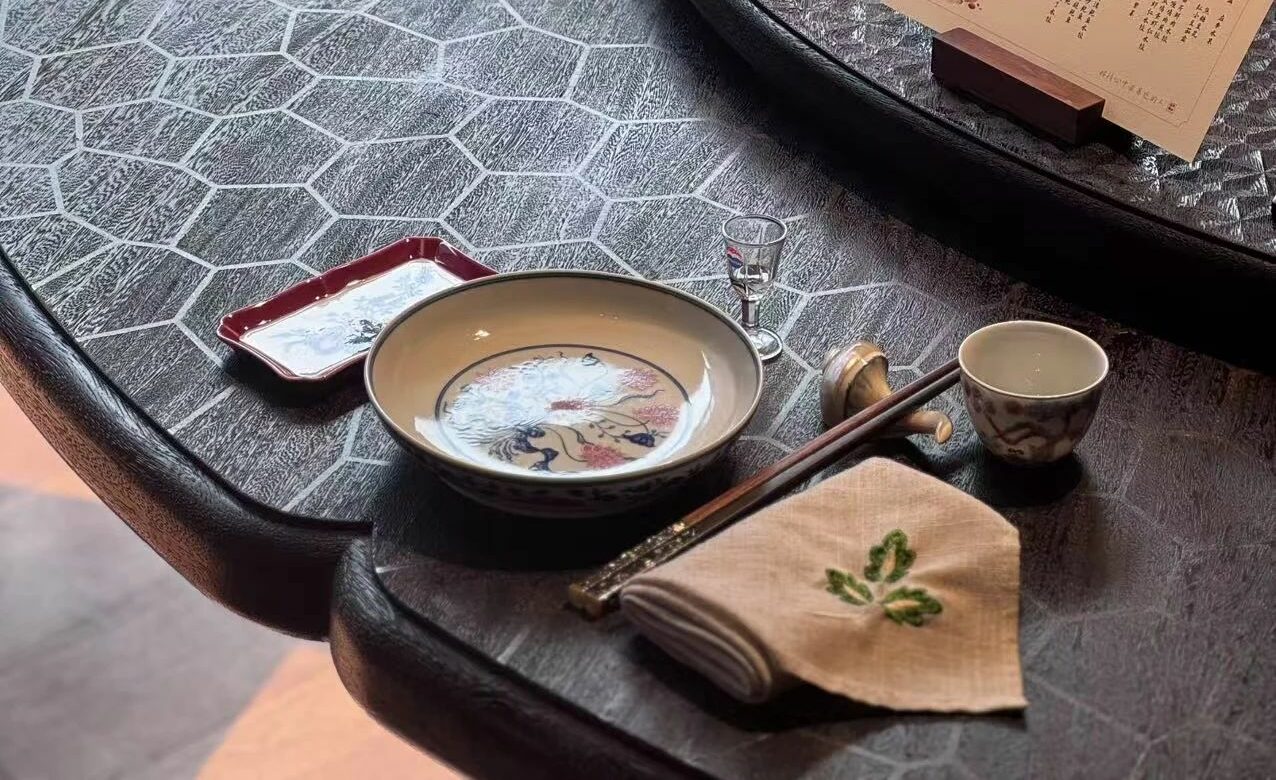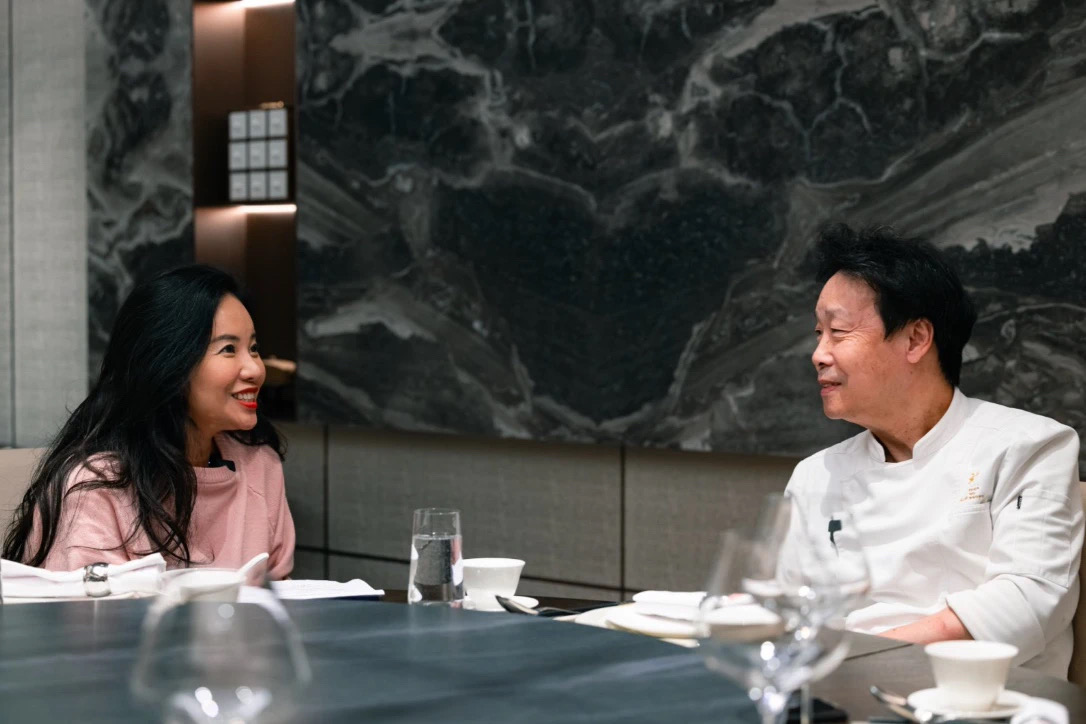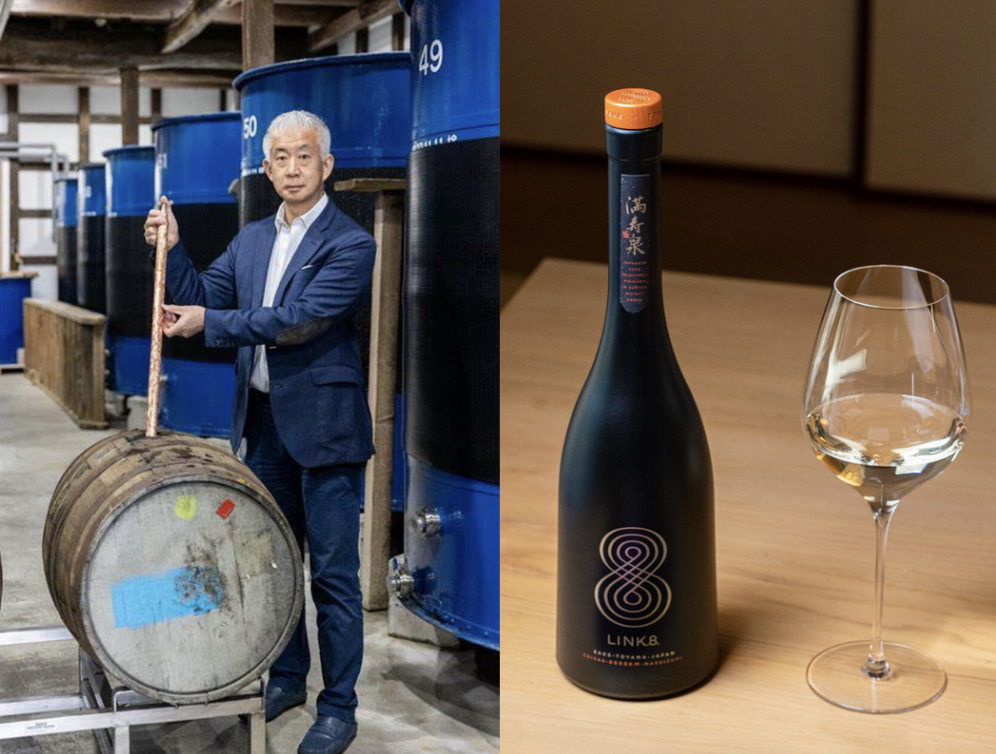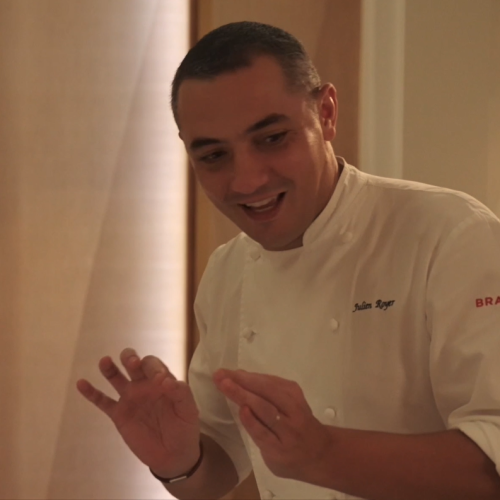Upon returning to Shanghai in early April, I had the opportunity to meet Chef Xu in person. Being a Michelin two-starred chef has gained Chef Xu more public attention and invitations to important events, including the four hands collaboration dinner with Chef Tam Kwok-Fung at the Shanghai Black Pearl Gala. I knew there would be pressure that comes along, but Chef Xu remains humble and easygoing as he speaks of finding ways to handle stress.
@tastytrip YouTube


The development of Guangzhou cuisine has deep historical roots. Early prosperity of the region due to its status as an important port city open to foreign trade in the past is imbedded in its cuisine, traditional but unpretentiously elegant. Even though I am still learning the history and culture of traditional Cantonese cooking, I am truly amazed by the new spring menu, which demonstrates Chef Xu’s creativity and refined mastery of ingredients. Each dish showcases the essential spirit of Cantonese cuisine, such as Asparagus with Shrimp Roe, Emerald Shrimps, and Stir Fried Pomfret, all of which are commendable.


Emerald Shrimps is a dish I like. Spring is the best time to enjoy river shrimps. The restaurant selects fresh local river shrimps and have them hand peeled every day. The “emerald” colour comes from spinach. Chef Xu believes seaweed can provide natural umami for the dish so he finishes off the shrimps with some fresh seaweed and sugar snap peas to the stir fry to create a unique combination of umami and sweetness. Chef Xu says he personally likes this dish as well.


 Asparagus with Shrimp Roe/Emerald Shrimps
Asparagus with Shrimp Roe/Emerald Shrimps
Stir Fried Pomfret is a Guangzhou stir-fry dish which is more about the wok and the heat. Pomfret is cut into rounded chunks, and then quickly stir-fried with minced onion, ginger and garlic. The fish balls come out perfectly in shape but melt away instantly in mouth.
8-head Dalian abalone, white onion, king oyster mushroom and roast duck are diced into small chunks. The onion is fried without adding any water until it caramelizes before adding butter and cheese to make a filling into the abalone shell for final baking in the oven. Caramelised onion, fatty roast duck and chewy mushrooms add to a multiplicity of texture and flavour. The 20th century in Guangzhou was a period when Cantonese cuisine flourished. With the opening of the Guangzhou port, many Western ingredients and dishes, including cheese, were introduced to Cantonese cuisine to form its own style where inclusion is the basic logic.

 Stir Fried Pomfret/8-head Dalian Abalone
Stir Fried Pomfret/8-head Dalian Abalone
The “patriotic soup” is a vegetable soup originated by Chaozhou people. Fresh shepherd’s purse is made into a puree and added into a broth made with crabmeat, dried scallop, shimeji white mushroom and whipped cream. Sakura shrimps are sprinkled on top for extra colour and aroma. It’s nourishing but not heavy, with a bright colour scheme, flavourful and rich mouthfeel.
In Dried Scallop with Crispy Fish Maw, fish maw is fully soaked in water and simmered in stock, then coated with water chestnut powder and deep fried until crunchy outside and tender inside. It is served in a transparent starch thickener made from broth, steamed scallop water and shredded scallops.


 Patriotic Soup/Dried Scallop with Crispy Fish Maw
Patriotic Soup/Dried Scallop with Crispy Fish Maw
The quail eggs are boiled in water and deep-fried in soy sauce, before being simmered in a premium stock with choy sum and straw mushrooms. Crab roe and crab meat of Sanmen blue crab are thickened with crab stock and crab oil and drizzled over the dish. The quail egg is loose in the center, and the crab roe is soft and tender. The trio of crab roe, crab meat and crab oil bring the umami flavour to a climax.
The Signature Sweet and Sour Pork sees a return to its classic pairing fruit, also my favourite version – the pineapple. Meltingly soft Jinhua pork is marinated, deep-fried and served with homemade fermented pineapple vinegar for added complexity. It is a dish I would miss from time to time.


 Crab & Quail Egg in Crab Roe/102 House Signature Sweet and Sour Pork
Crab & Quail Egg in Crab Roe/102 House Signature Sweet and Sour Pork
Many dishes on the menu require meticulous techniques, such as Silkie Chicken Soup with Ham & Almond, and Fried Longmen Chicken with Golden Oyster. Fresh oysters are sun-dried until turning golden in colour with a unique aroma. The “qu” (煀, means to smoke with heat coming from boiling oil) method adopted by this dish is a cooking technique unique to Cantonese cuisine. The chicken is marinated and fried in milk until it becomes light brown in colour. Then it is seasoned with onion, ginger, garlic, and heated over a slow fire with oyster and oyster sauce before finally being chopped, sided with golden oyster and drizzled with the original chicken juice. The result is tender, succulent chicken and aromatic, umami golden oyster.
Rice with Chinese Toon & Puffer Fish is another dish Chef Xu likes in the spring menu. Deboned local puffer fish is marinated overnight. Jasmine rice is cooked in a casserole with fish bone broth, topped with puffer fish meat and sprinkled with chopped Chinese toon and baked with the lid on. Open the lid and you will smell the grassy, fresh aroma of the toon, sweet smell of the rice, and taste the tender flesh of the puffer fish.The experience ends sweetly with Snow Fungus with Dried Tangerine Peel.



This season’s dishes are becoming more mature in their design, and the menu layout is also clear and logical in that Cantonese cuisine often adopts chicken or fishas the main dish towards the end of the banquet. The entire menu offers fresh flavors, braised and roasted dishes, as well as dried goods. If the chef is likened to a composer, Chef Xu’s compositions are not grand symphonies, but rather delicate and melodious tunes, perfect for savoring and appreciating.
The glorious Michelin-starred title indeed comes with pressure, Chef Xu says. But from his calm and composed demeanor, it seems to me that he naturally possesses the ability to digest stress and turn it into motivation. I believe the aura of fame will not change Chef Xu’s pace, as he is already on the way to becoming the next generation of Chinese cuisine’s iconic chef.
*Spring menu will end in mid-June.
Photo: Ye Shi










